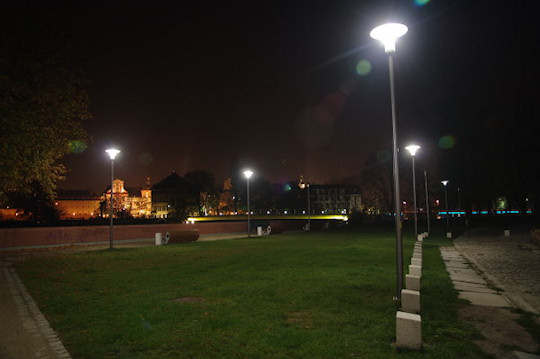Polarizing filters test
22. King Circular Polarizer 72 mm
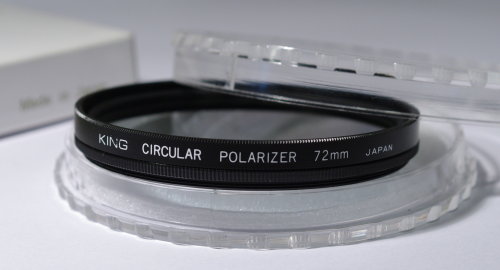 |
||
 |
||
On the Polish market, King products are limited to lens caps, UV and circular filters. Even though they’re cheap, the “Made in Japan” inscription causes the increase of customers’ trust towards the quality workmanship.
Results of the test
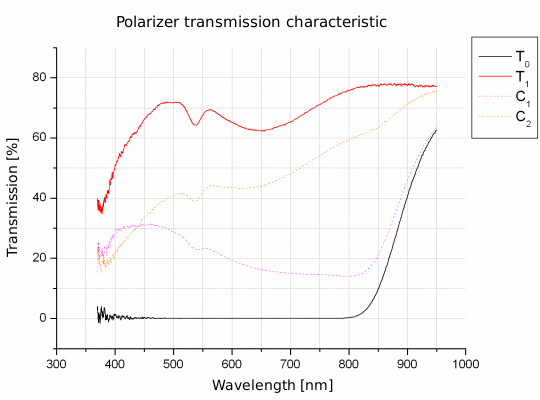
- - - - - - - - - - - - - - - - - - - - - - - - - - - - - - - - - - - - - - - - - - - - - - - -
Red color extinction coefficient: 1.32E-4 - Score: 3.4/4
Green color extinction coefficient: 1.67E-4 - Score: 3.5/4 Blue color extinction coefficient: 4.53E-3 - Score: 2/4 Mean transmission of the whole spectrum: 32.69% - Score: 1.54/3 Score:
|
|
||
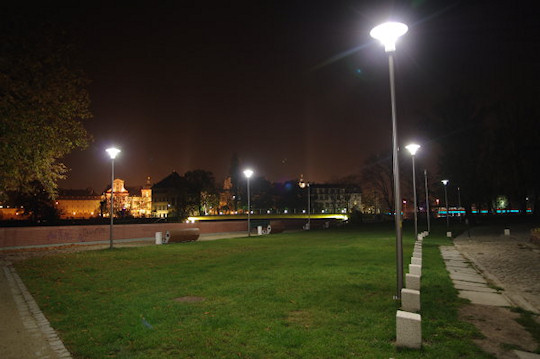
With filter Score:
|
|
||
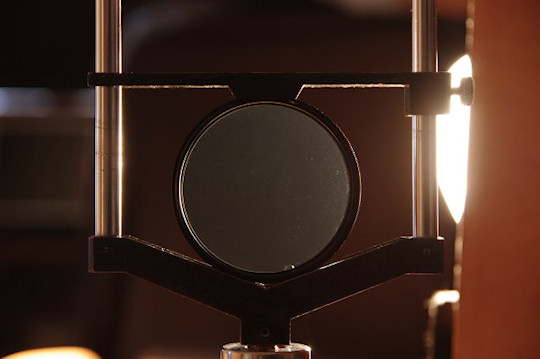
Luminance: 43.9
Score:
|
|
||
| Edge darkening: 4.2% Score: |
|
||
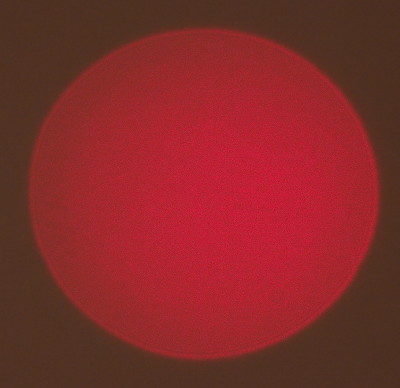
Slight flaw in homogeneity
Score:
|
|
||
|
|||
Usage
The filter didn’t cause any troubles during the tests. The ring turns smoothly, maybe a little too hard.
Summary
12th place in the overall ranking (25.2/37.5)The transmission curve behaves quite evenly from green through red, but worse in the opposite direction. Around 540 nm (green color) you can observe some small absorption area. It’s difficult to tell the reason for it, anyway it’s not an effect that disturbs the picture’s colors. A more serious effect is the transmission of blue and violet color, which may introduce slight yellow dominant. Extinguishing is very good in the whole visible spectrum. The polarizer becomes transparent in infrared. The extinction coefficient of around 1.5/10000 is a very good result for a foil polarizer. Around violet it behaves well comparing to the competition. C1 and C2 graphs are shifted in shorter waves’ direction compared to the middle of the spectrum. Such a move from engineers can be explained by the fact that the curve of quarter-wave plate’s dispersion is more flat at longer waves’ side, this way the dispersion can be artificially flattened and the polarizer works better in the range of shorter waves. It’s too bad that the transmission curve falls quite fast there. King placed 12th scoring in the extinction coefficient and homogeneity, and losing for flares and scattering. Placing antireflection coatings would put much more expensive competition’s products in a bad situation.
Filter for tests was lent by Fotoplanet.pl




